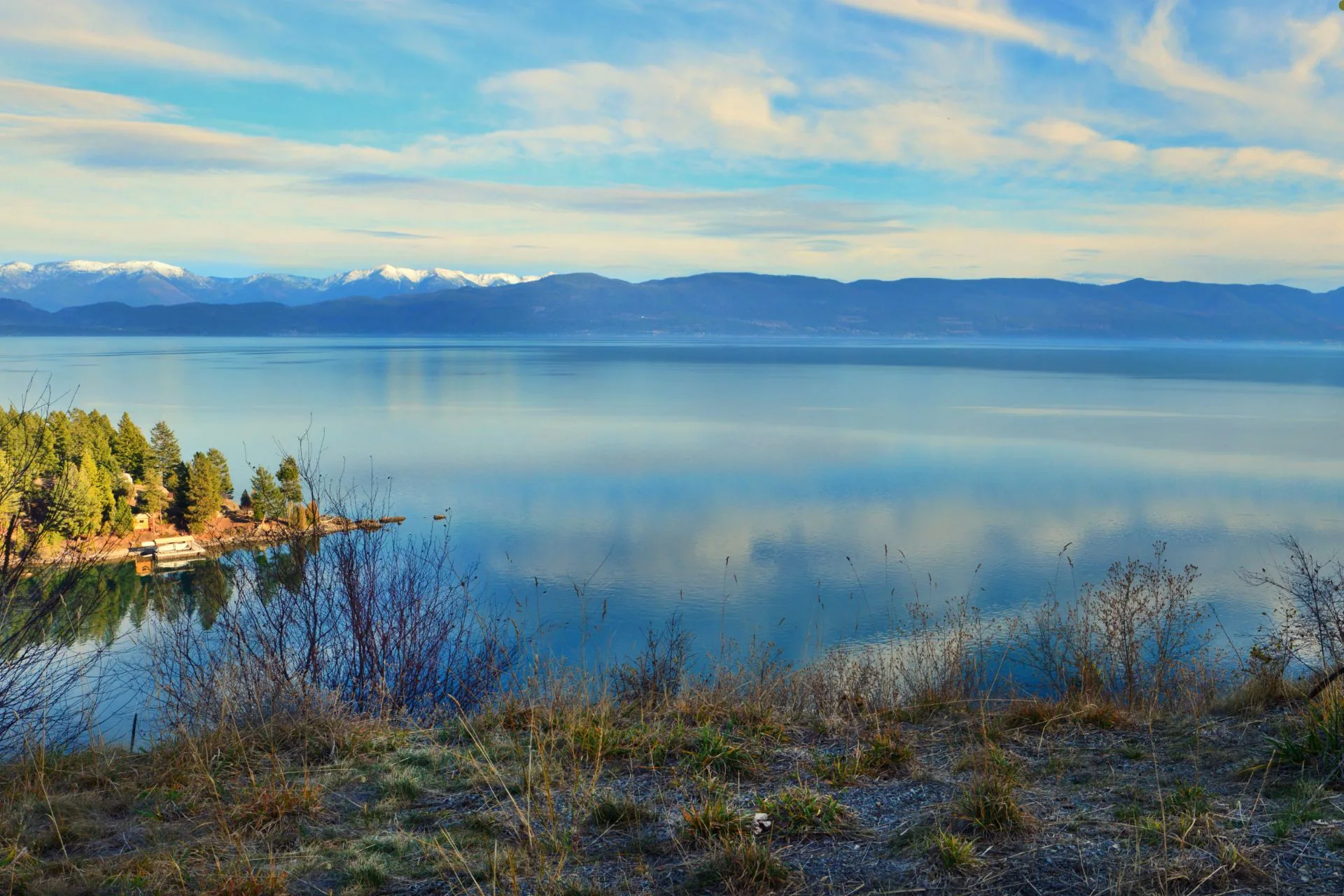Polson, Montana: Unseasonably warm and dry conditions continue to significantly decrease water supply in the Flathead River Basin and spring runoff is quickly receding bringing river flows to extremely low levels. These conditions have forced operations at SKQ to again be at license required minimums and filling Flathead Lake as aggressively as possible while avoiding
flood control limits. In spite of these operational sacrifices by EKI, the melted snow remaining will not get Flathead Lake to full pool. Current forecasts have the lake reaching its maximum for the year of 2891.9 feet near June 15 when the inflows are expected to go below the minimum outflow requirement which will cause the lake levels to decrease. The lake may lower an additional foot to be nearly 2 feet below full pool by the 4th of July weekend and potentially 3 feet below full pool in August. Full pool is 2893.
While recreational boating and fishing can continue at any lake elevation with the accessible public boat ramps, lake users should be aware that lakefront boat storage and dock access may be affected if these water level forecasts are realized. As forecasts are updated through the months of June and July EKI will update the public to any changes.
Please see updated forecasts on Flathead Lake levels with inflows and outflows, and frequently asked questions with answers at: https://energykeepersinc.com/flathead-lake-data/
About Energy Keepers, Inc
Energy Keepers, Inc (EKI) is a is a federally chartered corporation created and wholly owned by the Confederated Salish and Kootenai Tribes (CSKT) of the Flathead Reservation, pursuant to Section 17 of the Indian Reorganization Act of 1934. As well as developing economically, the CSKT are nationally recognized as a leader amongst Tribal nations for exercising their sovereign powers to preserve and protect cultural, wildlife and natural resources of their traditional homeland now and for future generations. CSKT and EKI are the co-licensees of FERC Project No. 5, the Seli’š Ksanka Qlispe’ Project located on Tribal Land six miles below the natural outlet of Flathead Lake on the Lower Flathead River.
Frequently asked questions regarding Energy Keepers, Inc. and Flathead Lake
Q. Why the sudden decrease in water supply?
A. Unseasonably warm and dry conditions have significantly decreased water supply in the Flathead River Basin. April precipitation in the Flathead basin was 70 percent of normal and May was 71 percent of normal. So far, June has been significantly below normal and the 10-day weather forecast shows continued below normal chance of precipitation.
Q. If the snow pack is fine then why aren’t we filling this year?
A. Snow pack is currently below normal for both the Middle Fork and the North Fork basins which provide approximately 60% of the inflow to Flathead Lake. In addition, what snow pack we did have is not making it to stream flow due to the unseasonable hot and dry conditions. The North Fork of the Flathead River for example is currently at 5900 cubic feet per second (cfs) and falling rapidly. This is 50% of normal. The Middle Fork is also at 50% of normal flow. The biggest driver of the inability to fill the lake is spring precipitation which is forecasted to continue dry conditions in the 10-day weather forecast.
Q. Did EKI implement a drought management plan?
A. EKI began implementing the license-required Drought Management Plan in early spring to protect the minimum instream flows in the Lower Flathead River. On March 13, the U.S Army Corps of Engineers approved a flood risk management deviation request rather than require the full winter draw – typically 10 feet below full pool. These actions helped bring lake elevations to three feet from full pool on May 26. Dam operators have maintained minimum flows since then.
Q. Why did EKI drop the lake a foot when you were in the process of filling it?
A. The decision to increase outflows and draw Flathead Lake in late April was made in consultation with the USACE to meet Flood Risk Management objectives and minimize spill operations later in the season. The project was as full as permissible on May 26.
While the three years combined, 2023, 2024, and 2025 will be the driest consecutive years in the historic data set for the Flathead Basin dating back to 1949, in June 2022 record high precipitation occurred in the basin. The resulting natural streamflows over-filled Flathead Lake by 0.7 Ō. Historically high flow events have different health and human safety and property risks than the historically dry events and the U.S. Army Corps of Engineers must consider a range of weather dependent outcomes as they create local and system flood risk management objecƟves. Contact the U.S. Army Corps of Engineers for specific questions related to flood risk management.
Q. Why isn’t EKI filling the lake, isn’t that required by license?
A. The license does not require EKI to fill the lake. The License authorizes EKI to use the top 10 feet of lake elevation (from 2883 feet to 2893 feet) to store water for use by the licensee.
Q. I’ve heard CSKT is selling/leasing water through their water compact and not filling Flathead Lake, true?
A. False. We’ve heard that rumor too. No water is currently being leased or sold by the CSKT as part of the water compact or for any other purpose.
Q. Previous owners filled the lake every year. Why can’t EKI fill Flathead Lake?
A. With the dry hydrologic forecasts for the remainder of 2025, this will be the third year in a row of abnormally dry water supply conditions. The three years (2023, 2024, and 2025) combined will be the driest consecutive years in the historic data set for the Flathead Basin which has data back to 1949.
Q. Why can’t we move water from Hungry Horse to Flathead Lake?
A. The South Fork of the Flathead River basin also has quickly diminishing snowpack that is not making it to the river as it melts off this spring. Current streamflow on the South Fork above Hungry Horse reservoir is only 4230 cfs, 43% of normal. Hungry Horse Dam is not managed to provide a specific elevation at Flathead Lake. The Bureau of Reclamation has to operate Hungry Horse Dam to meet multiple obligations, including flood risk management and fish and wildlife conservation provided under the Endangered Species Act. And, it has to do so in a dynamic, unpredictable environment, with the input of multiple Federal, state, and tribal regulatory agencies, including those represented on the Technical Management Team.
Q. Why did we go above minimum instream flows earlier in April and May? A. The SKQ Project was operated to have the lake as full as allowed on May 26th but no higher.
Q. Are weather trends a part of this situation?
A. There are hotter temperatures this year that really stand out when compared to normal temperature ranges. However, even more impactful is the decrease in basin precipitation. April precipitation in the Flathead basin was 70 percent of normal and May was 71 percent of normal. So far, June has been below normal and the 10-day weather forecasts show continued dry forecasts.
Q. Why are some areas seeing normal water conditions?
A. Spring precipitation plays a key role in water realized in rivers from snow pack. In addition to the Flathead Basin conditions being extremely dry the Clark Fork and Kootenai River basins as well as other basins across Montana, Idaho and Washington are also receding far ahead of schedule.
(via Energy Keepers Inc.)



